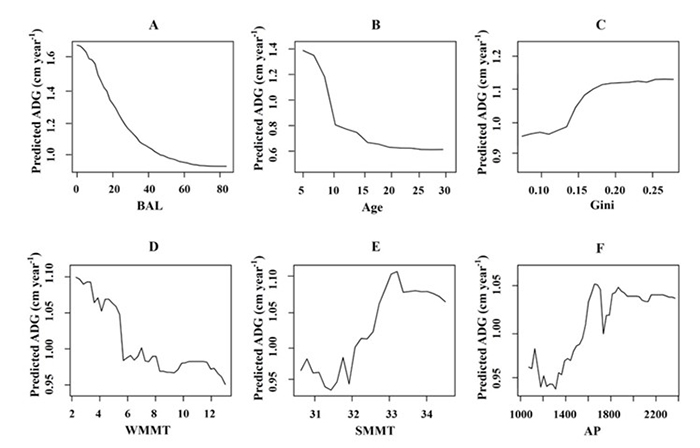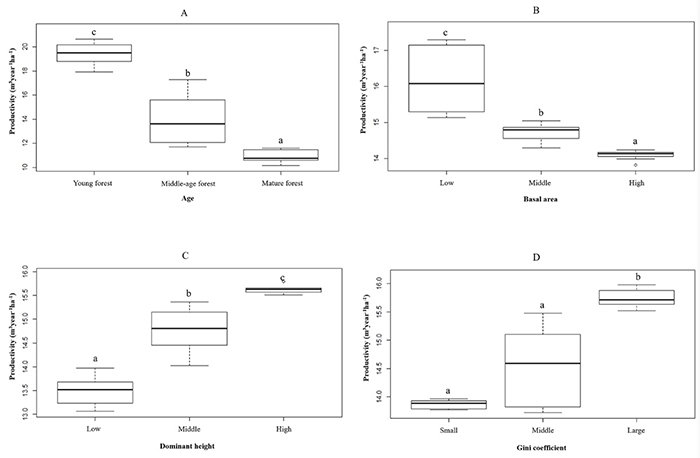
城市绿色空间对居民心理健康影响研究综述
编号
lyqk009455


中文标题
城市绿色空间对居民心理健康影响研究综述


作者单位
北京林业大学经济管理学院,北京 100083


期刊名称
世界林业研究


年份
2021


卷号
34


期号
2


栏目编号
1.0


栏目名称
专题论述


中文摘要
随着经济增长和城市化的推进,城市居民在收入水平提升后,对于居住品质尤其是绿色健康生活的需求日益增加。已有系列研究证实了城市绿色空间与居民心理健康的正相关关系,但其因果关系特别是影响机制的相关研究尚不充分。基于此,文中综合不同学科的研究,概述了城市绿色空间与居民心理健康关系的相关结论,总结出可能的影响机制——即以情绪、压力、社会交往和邻里满意度为中介因素;从研究的主要对象和具体方法2个方面对国内外有关城市绿色空间与居民心理健康关系的研究进行了分析对比;从精准化的信息采集、系统化的实证研究、多学科的综合研究3个方面对下一步研究提出具体建议。


关键词
城市绿色空间
心理健康
影响机制
研究设计
研究综述


基金项目
国家社会科学基金青年项目“国家森林城市高质量发展的影响机制、实际效果与管理对策研究”(20CGL064);国家自然科学基金青年项目“城市家庭对地方公共品的异质性偏好识别与应用研究”(71603024);国家自然科学基金面上项目“南方集体林区公益林补偿政策对农户收入的影响


英文标题
A Review of the Impact of Urban Green Space on Residents’ Mental Health


作者英文名
Zhang Yingjie, Shi Haiying, Cheng Baodong


单位英文名
School of Economics and Management, Beijing Forestry University, Beijing 100083, China


英文摘要
With the advancement of economic growth and urbanization, urban residents have an increasing demand for living quality, especially a green and healthy life, after their income levels increase. A series of studies have confirmed the positive correlation between urban green space and the mental health of residents, but the research on the causal relationship, especially the related research on the influence mechanism, is still insufficient. Based on this, the paper synthesizes the research of different disciplines, summarizes the relevant conclusions of the relationship between urban green space and residents' mental health, and summarizes the possible influence mechanism, i.e., mood, pressure, social interaction and neighborhood satisfaction are intermediary factors. The research on the relationship between urban green space and residents' mental health at home and abroad is analyzed and compared from two aspects of the main objects and specific methods. Specific recommendations for the future research are made from three aspects of precise information collection, systematic empirical research, and multidisciplinary comprehensive research.


英文关键词
urban green space;mental health;influence mechanism;research design;literature review


起始页码
8


截止页码
13


投稿时间
2020/5/6


最后修改时间
2021/2/5


作者简介
张英杰,副教授,主要研究方向为森林城市与城市可持续发展,E-mail:zyj2015@bjfu.edu.cn


通讯作者介绍
施海颖,北京林业大学学生,主要研究方向为城市绿色空间与居民心理健康,E-mail:shyxy216@163.com


E-mail
施海颖,shyxy216@163.com


分类号
S731.2


DOI
10.13348/j.cnki.sjlyyj.2021.0010.y


参考文献
[1] 王馨笛. 基于虚拟现实场景体验的绿色小空间对精神疲劳恢复的影响研究[D]. 哈尔滨: 哈尔滨工业大学, 2018: 83.
[2] MAAS J, VERHEIJ R A, SPREEUWENBERG P. Physical activity as a possible mechanism behind the relationship between green space and health: a multilevel analysis[J]. BMC Public Health, 2008, 8:206. DOI:10.1186/1471-2458-8-206
[3] MAAS J, VAN DILLEN S M E, VERHEIJ R A, et al. Social contacts as a possible mechanism behind the relation between green space and health[J]. Health & Place, 2009, 15(2):586-595.
[4] Mental health action plan 2013–2020[M]. Geneva, Switzerland: World Health Organization, 2013: 50.
[5] 姚亚男, 李树华. 基于公共健康的城市绿色空间相关研究现状[J]. 中国园林,2018,34(1):118-124.
[6] LEE A C K, MAHESWARAN R. The health benefits of urban green spaces: a review of the evidence[J]. Journal of Public Health, 2011, 33(2):212-222.
[7] WHITE M P, ALCOCK I, WHEELER B W, et al. Would you be happier living in a greener urban area?: a fixed-effects analysis of panel data[J]. Psychological Science, 2013, 24(6):920-928.
[8] ERNSTSON H. The social production of ecosystem services: a framework for studying environmental justice and ecological complexity in urbanized landscapes[J]. Landscape and Urban Planning, 2013, 109(1):7-17.
[9] BRINGSLIMARK T, HARTIG T, PATIL G G. The psychological benefits of indoor plants: a critical review of the experimental literature[J]. Journal of Environmental Psychology, 2009, 29(4):422-433.
[10] DZHAMBOV A, DIMITROVA D. Urban green spaces' effectiveness as a psychological buffer for the negative health impact of noise pollution: a systematic review[J]. Noise and Health, 2014, 16(70):157-165.
[11] BARTON J, PRETTY J. What is the best dose of nature and green exercise for improving mental health?: a multi-study analysis[J]. Environmental Science & Technology, 2010, 44(10):3947-3955.
[12] LESLIE E, CERIN E. Are perceptions of the local environment related to neighbourhood satisfaction and mental health in adults?[J]. Preventive Medicine, 2008, 47(3):273-278.
[13] NIELSON T S, HANSEN H B. Do green areas affect health?: results from a Danish survey on the use of green areas and health indicators[J]. Health & Place, 2007, 13(4):839-850.
[14] WOO J, TANG N, SUEN E, et al. Green space, psychological restoration, and telomere length[J]. The Lancet, 2009, 373(9660):299-300.
[15] VAN DEN BERG A E, MAAS J, VERHEIJ R A, et al. Green space as a buffer between stressful life events and health[J]. Social Science & Medicine, 2010, 70(8):1203-1210.
[16] LU L. Daily hassles and mental health: a longitudinal study[J]. British Journal of Psychology, 1991, 82(4):441-447.
[17] ECHEVERRÍA S, DIEZ-ROUX A V, SHEA S, et al. Associations of neighborhood problems and neighborhood social cohesion with mental health and health behaviors: the multi-ethnic study of atherosclerosis[J]. Health & Place, 2008, 14(4):853-86.
[18] GREINER K A, LI C, KAWACHI I, et al. The relationships of social participation and community ratings to health and health behaviors in areas with high and low population density[J]. Social Science & Medicine, 2004, 59(11):2303-2312.
[19] KAPLAN R. The Nature of the view from home[J]. Environment and Behavior, 2001, 33(4):507-542.
[20] 盛明洁. 欧美邻里效应研究进展及对我国的启示[J]. 国际城市规划,2017,32(6):42-48.
[21] FRIED M. Residential attachment: sources of residential and community satisfaction[J]. Journal of Social Issues, 1982, 38(3):107-119.
[22] HUR M, NASAR J L, CHUN B. Neighborhood satisfaction, physical and perceived naturalness and openness[J]. Journal of Environmental Psychology, 2009, 30(1):52-59.
[23] VAN HERZELE A, DE VRIES S. Linking green space to health: a comparative study of two urban neighbourhoods in Ghent, Belgium[J]. Population and Environment, 2012, 34(2):171-193.
[24] WILSON K, ELLIOTT S, LAW M, et al. Linking perceptions of neighbourhood to health in Hamilton, Canada[J]. Journal of Epidemiology and Community Health, 2004, 58(3):192-198.
[25] CHOUMERT J, SALANIE J. Provision of urban green spaces: some insights from economics[J]. Landscape Research, 2008, 33(3):331-345.
[26] KONDO M C, LOW S C, HENNING J, et al. The impact of green stormwater infrastructure installation on surrounding health and safety[J]. American Journal of Public Health, 2015, 105(3):114-121.
[27] KONDO M C, FLUEHR J M, MCKEON T, et al. Urban green space and its impact on human health[J]. International Journal of Environmental Research and Public Health, 2018, 15(3):444-445.
[28] FLOURI E, MIDOUHAS E, JOSHI H. The role of urban neighbourhood green space in children's emotional and behavioural resilience[J]. Journal of Environmental Psychology, 2014, 40:179-186.
[29] GRUEBNER O, KHAN M M H, LAUTENBACH S, et al. Mental health in the slums of Dhaka: a geoepidemiological study[J]. BMC Public Health, 2012, 12:177. DOI:10.1186/1471-2458-12-177
[30] 房城. 城市绿地的使用与城市居民健康的关系初探[D]. 北京: 北京林业大学, 2008: 113.
[31] KENIGER L, GASTON K, IRVINE K, et al. What are the benefits of interacting with nature?[J]. International Journal of Environmental Research and Public Health, 2013, 10(3):913-935.
[32] BUTRYN T M, FURST D M. The effects of park and urban settings on the moods and cognitive strategies of female runners[J]. Journal of Sport Behavior, 2003, 26(4):335-355.
[33] BROWN D K, BARTON J L, PRETTY J, et al. Walks4Work: assessing the role of the natural environment in a workplace physical activity intervention[J]. Scandinavian Journal of Work, Environment & Health, 2014, 40(4):390-399.
[34] ANNERSTEDT M, OSTERGREN P O, BJÖRK J, et al. Green qualities in the neighbourhood and mental health: results from a longitudinal cohort study in Southern Sweden[J]. BMC Public Health, 2012, 12:337. DOI:10.1186/1471-2458-12-337
[35] DE VRIES S, VAN DILLEN S M E, GROENEWEGEN P P, et al. Streetscape greenery and health: stress, social cohesion and physical activity as mediators[J]. Social Science & Medicine, 2013, 94:26-33.
[36] NIEUWENHUIJSEN M J, DONAIRE-GONZALEZ D, FORASTER M, et al. Using personal sensors to assess the exposome and acute health effects[J]. International Journal of Environmental Research and Public Health, 2014, 11(8):7805-7819.
[37] ASPINALL P, MAVROS P, COYNE R, et al. The urban brain: analysing outdoor physical activity with mobile EEG[J]. British Journal of Sports Medicine, 2015, 49(4):272-276.
[38] TRIGUERO-MAS M, DADVAND P, CIRACH M, et al. Natural outdoor environments and mental and physical health: relationships and mechanisms[J]. Environment International, 2015, 77:35-41.
[39] SARKAR C, GALLACHER J, WEBSTER C. Urban built environment configuration and psychological distress in older men: results from the Caerphilly study[J]. BMC Public Health, 2013, 13:695. DOI:10.1186/1471-2458-13-695
[40] ROLAND S, DEBORAH C. Proximity to urban parks and mental health[J]. The Journal of Mental Health Policy and Economics, 2014, 17(1):19-24.
[41] RICHARDSON E A, PEARCE J, MITCHELL R, et al. Role of physical activity in the relationship between urban green space and health[J]. Public Health, 2013, 127(4):318-324.
[42] NUTSFORD D, PEARSON A L, KINGHAM S. An ecological study investigating the association between access to urban green space and mental health[J]. Public Health, 2013, 127(11):1005-1011.
[43] DUNCAN D T, PIRAS G, DUNN E C, et al. The built environment and depressive symptoms among urban youth: a spatial regression study[J]. Spatial and Spatio-temporal Epidemiology, 2013, 5:11-25.
[44] ASTELL-BURT T, FENG X, KOLT G S. Mental health benefits of neighbourhood green space are stronger among physically active adults in middle-to-older age: evidence from 260, 061 Australians[J]. Preventive Medicine, 2013, 57(5):601-606.
[45] 郭庭鸿, 舒波, 董靓. 自然与健康: 自然景观应对压力危机的实证进展及启示[J]. 中国园林,2018,27(5):5-9.
[46] KLAUS S, SABINE D, RALF H. Making friends in Zurich's urban forests and parks: the role of public green space for social inclusion of youths from different cultures[J]. Preventive Medicine, 2008, 11(1):10-17.
[47] ELMIRA A, PAYAM D, JOAN F, et al. Green and blue spaces and behavioral development in Barcelona schoolchildren: the BREATHE project[J]. Ehp Toxicogenomics: Journal of the National Institute of Environmental Health Sciences, 2014, 122(12):1351-1358.
[48] HALOI R, INGLE N A, HALOI E, et al. Social capital and health: a review[J]. Journal of Orofacial & Health Sciences, 2015, 6(3):125-130.
[49] GRINSTEIN-WEISS M, YEO Y, ANACKER K, et al. Homeownership and neighborhood satisfaction among low- and moderate-income households[J]. Journal of Urban Affairs, 2011, 33(3):247-265.
[50] FAN Y, V DAS K, CHEN Q. Neighborhood green, social support, physical activity, and stress: assessing the cumulative impact[J]. Health & Place, 2011, 17(6):1202-1211.


PDF全文
浏览全文


-
相关记录
更多
- 世界孑遗红树植物水椰研究进展 2022
- 城市绿色空间的雨洪调蓄效益研究进展 2024
- 城市邻里绿地与心理健康研究进展 2024
- 国外基于自然的解决方案(NbS)研究进展 2024
- 社区尺度下城市绿地对老年人健康的影响机制 2023
- 儿童和陪伴者共享的城市绿色空间研究进展 2023
 打印
打印



